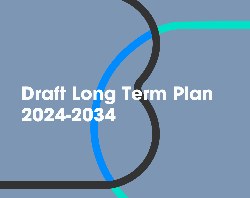NZ third-quarter unemployment sinks to nine-year low
NZ third-quarter unemployment sinks to nine-year low, wage inflation accelerates
By Rebecca Howard
Nov. 1 (BusinessDesk) - New Zealand's jobless rate fell to a nine-year low in September while the impact of $2 billion pay equity settlement for care and support works stoked wage inflation. The kiwi dollar jumped almost half a US cent.
The unemployment rate dropped to 4.6 percent in the three months ended Sept. 30 down from 4.8 percent in June, Statistics New Zealand said in its household labour force survey. That's the lowest level since the December 2008 quarter when New Zealand was in recession, and below the 4.7 percent predicted in a Bloomberg poll of 12 economists.
The local currency rose to 68.85 US cents as at 10.55am from 68.48 cents immediately before the release.
The participation rate rose to 71.1 percent from 70 percent in June as 54,000 more people entered the workforce, and marked a record. While the huge increase was a “little puzzling,” labour market and household statistics manager Diane Ramsey said Stats NZ was confident in the integrity of the data.
“This is in line with stronger quarterly working-age population growth and near record high annual net migration,” she said.
Employment rose 2.2 percent in the quarter to 2.59 million and was 4.2 percent higher than a year earlier. Economists had expected a 0.8 percent quarterly gain. More than 85 percent of the growth in employment was from full-timers, Stats NZ said. More than half the employment growth came from those aged 25-to-39 but there was also “statistically significant employment growth” for those aged 55-to-59 and 60-to-64.
Total actual hours worked increased 2.4 percent in the quarter to 87,700 a week and the underutilisation rate, which measures the country's potential labour supply and unmet need for work, was steady at 11.8 percent in the quarter and down from 12.3 percent a year ago. It remains at the lowest level since December 2008.
Stats NZ's labour market data also included the labour cost index, which showed private sector wage inflation rose 0.7 percent in the quarter for a 1.9 percent annual increase. Public sector wage inflation was up 0.4 percent in the quarter for a 1.5 percent annual gain, and across both sectors, wage inflation rose a quarterly 0.6 percent and an annual 1.9 percent, marking the highest annual increase since the September 2012 quarter.
The data was impacted by the Care and Support Workers Settlement Act 2017, which came into effect on July 1.
“The settlement for 55,000 care and support workers as a key driver for the latest quarter’s wage growth,” said prices, accommodation and construction statistics senior manager Jason Attewell.
Stripping out the impact of that deal, LCI wages and salaries would have increased 1.6 percent rather than 1.9 percent.
In the September quarter LCI wage rates for the healthcare industry – both public and private – rose 2.2 percent. By comparison, wage rates rose 0.4 percent in the previous quarter, Stats NZ said.
The quarterly employment survey, also released today, showed private sector ordinary time average hourly earnings rose 1.2 percent to $28.37 in the September quarter and were 2 percent higher than a year earlier. Public sector ordinary time wages rose 0.6 percent to $38.69 in September for an annual gain of 3.3 percent.
(BusinessDesk)
ends


 Business Canterbury: Urges Council To Cut Costs, Not Ambition For City
Business Canterbury: Urges Council To Cut Costs, Not Ambition For City Wellington Airport: On Track For Net Zero Emissions By 2028
Wellington Airport: On Track For Net Zero Emissions By 2028 Landcare Research: ANZAC Gall Fly Release Promises Natural Solution To Weed Threat
Landcare Research: ANZAC Gall Fly Release Promises Natural Solution To Weed Threat NZ Anti-Vivisection Society: Auckland Rat Lovers Unite!
NZ Anti-Vivisection Society: Auckland Rat Lovers Unite! University of Canterbury: $1.35 Million Grant To Study Lion-like Jumping Spiders
University of Canterbury: $1.35 Million Grant To Study Lion-like Jumping Spiders Federated Farmers: Government Ends War On Farming
Federated Farmers: Government Ends War On Farming



